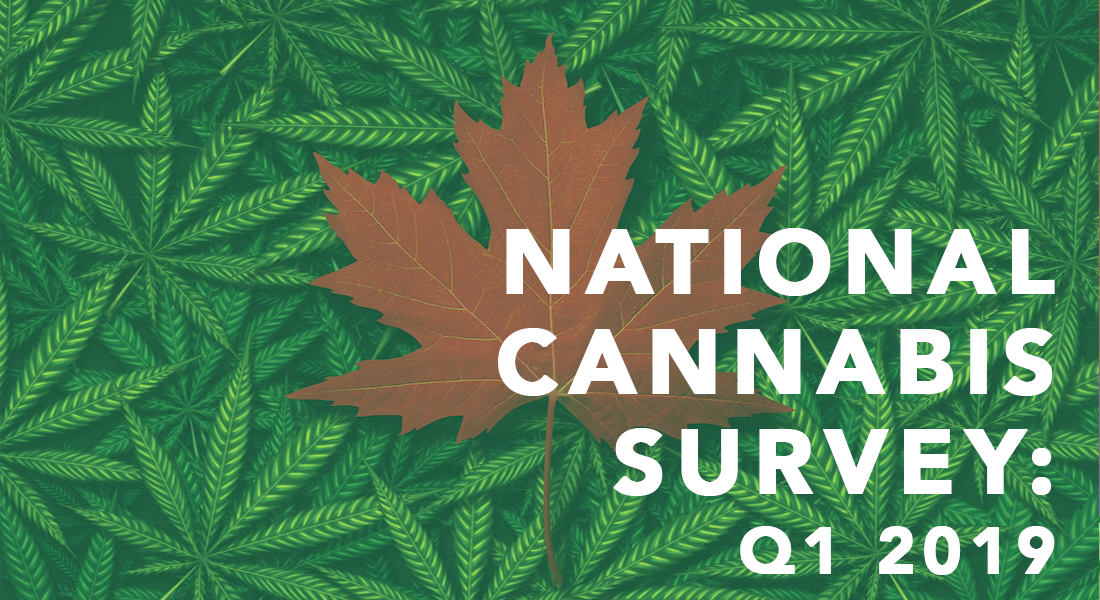In the wake of cannabis legalization in Canada, many more Canadians are consuming marijuana, the first post-legalizaton national survey shows.
About 5.3 million, or 18% of Canadians aged 15 and above, reported having consumed weed in the last three months. The Q1 2019 national survey shows that this number eclipsed the 14% of the Canadian population that consumed weed one year earlier, before cannabis was officially legalized in Canada in October 2018.
According to the study, more men aged between 45 and 64 consumed weed in the first quarter of 2019 compared to last year. Their numbers spiked from a low of 16% to the current 22%. For those in the 45 to 64 age bracket, their numbers shot from 9% to 14%, although other demographics remained hugely unchanged. For instance, female consumers stagnated at 13% and the youth and seniors brackets remained unchanged.
At the provincial level, cannabis consumption figures remained unchanged in all provinces. Only Ontario saw its weed prevalence rates spike from 14% to 20%.
The National Cannabis Survey monitors cannabis consumption and behaviours before and after legalization. Since February 2018, the survey has collected data every three months to get insights on cannabis consumption, source and other behaviours. Today’s release is the first one since cannabis was legalized in Canada in October 2018.
 The number of new cannabis users increasing
The number of new cannabis users increasing
According to the survey, the number of people trying cannabis for the first time has increased post-legalization.
Others who are consuming weed are former consumers who had stopped but resumed after legalization.
In the first three months of 2019, 624, 000 people said they tried cannabis for the very first time, compared to 327,000 people who tried it a year earlier.
The survey also shows that most first timers are older, with half of them aged 45 and above.
Last year, this age group represented a third of new weed consumers. Males and young Canadians remain more likely to use cannabis.
Results show that cannabis use increased immediately after legalization. However, some aspects remained unchanged. For instance, more men(22%) were still consuming weed than women(13%). In the same light, 30% of users were aged between 15 and 24 years while only 16% of users were 25 years and above.
More cannabis users are obtaining it from legal sources, less from illegal sources
Post-legalization, more Canadians are getting cannabis from legal sources compared to a year earlier. The report shows that up to 47% of weed users got their cannabis from legal sources, including licensed online sellers and retailers, compared to 27% of users in the same period last year.
Only 38% of consumers said they obtained weed from illegal sources compared to 51% in 2018.
Those who said they got cannabis from family and friends decreased from 47% to 37%.
According to the report, some users obtained cannabis from multiple sources which include legal and illegal ones. Those who started consuming weed in the first quarter of 2019 were less likely (23%) to try illegal sources compared to other users(40%).
Daily or almost daily cannabis use remains unchanged, while weekly use increases
Daily or almost daily cannabis use is regarded as one of the most informative indicators of the impact of cannabis legalization. Daily use is associated with mental health problems, addiction and reduced academic performance.
After legalization, 6% of Canadians aged 15 years and above said they consumed weed daily. A further 4% said they consumed it weekly, while 4% consumed it every month. 6% of users said they have consumed it once or twice in the last three months.
Compared to 2018 figures, daily and weekly consumption remained unchanged while monthly usage increased from 2%-4%. Likewise, occasional use increased from 4%-6% post-legalization. More monitoring is needed to ascertain whether these trends are as a result of the urge to try a previously illegal substance or are long-term trends.
In terms of consumption patterns, age and gender varied greatly. Daily or near-daily consumption was more prevalent in those aged 15 to 24 (10%) compared to older consumers(6%).
Again, men were more likely to consume weed (8%) than women (5%).
The above estimates remained unchanged in the first quarter of 2018.
The survey noted that while most daily users are associated with risky behaviour, occasional users are also likely to engage in the same risky behaviours, such as getting behind the wheel.
Almost half of Canadians believe that people should wait at least three hours before driving, once they have consumed cannabis
According to the survey, there are safety concerns about whether cannabis leads to impaired driving. Data pieced together from police statistics show that 49% of Canadians believe that you should wait for three hours before taking the wheel, once you have consumed weed.
However, 9% of the consumers said that it was not a bad thing to drive immediately after consuming weed.
The remaining 45% of the population said that other factors, including the method of consumption and the driver’s weight, determined how fast the driver could go behind the wheel after stoning.
The survey shows that men(7%) are believed to think it’s safe to resume driving before three hours lapse, compared to women(5%).
Additionally, more daily consumers were twice as likely as any other Canadian to believe that you should wait for at least three hours before driving a car. 18% of daily users said this was true, same as 7% of other current consumers, 5% of former users, 4% of people who have never consumed weed.
Beliefs about when it’s safe to drive after consuming weed are reflected in behaviour
According to this survey, 15% of cannabis consumers with a driving licence reported that they waited for two hours before hitting the road.
Of those who believed others safe to drive three hours after consuming weed, 36% said they could drive after only two hours.
Only 2% said it was safe to drive after three hours. Even those who pegged their beliefs on other factors like the weight of the driver (19%) said that they were less likely towards for two hours before driving.
The survey also showed that 4% of Canadians aged 15 years and above reported being a passenger in a vehicle that was driven by a consumer who didn’t wait for two hours after consuming weed.
Additionally, those who believed it was safe to wait for three hours before driving(20%) were more likely to jump into a car with a stoned driver, compared to 2% of users who believe three hours are ideal. 7% of users who considered other factors were less likely to get into a vehicle that was driven by a cannabis user.
The survey also looked at the relationship between cannabis and alcohol use. It showed that close to 20% of those who reported having driven a vehicle while high on cannabis also admitted that they had taken alcohol, representing 3% of cannabis consumers with a driver’s license.
More than half a million Canadians reported having cannabis before heading to work or while on the job
The workplace was not left out when it came to cannabis use.
The survey estimated that 13% of Canadians used cannabis while at the workplace, or just before they stepped into their workplace.
Of these, 27% of daily users reported consuming cannabis before or while at work, compared to 7% of other users.






